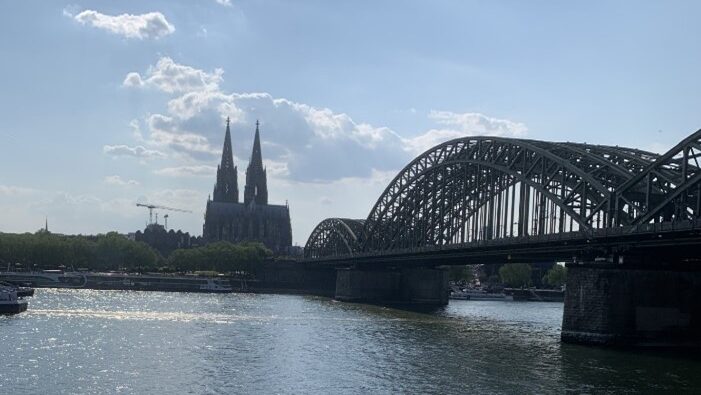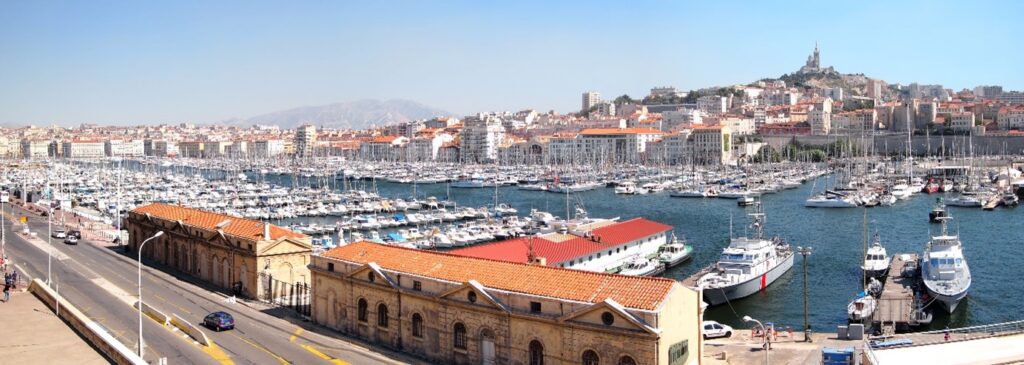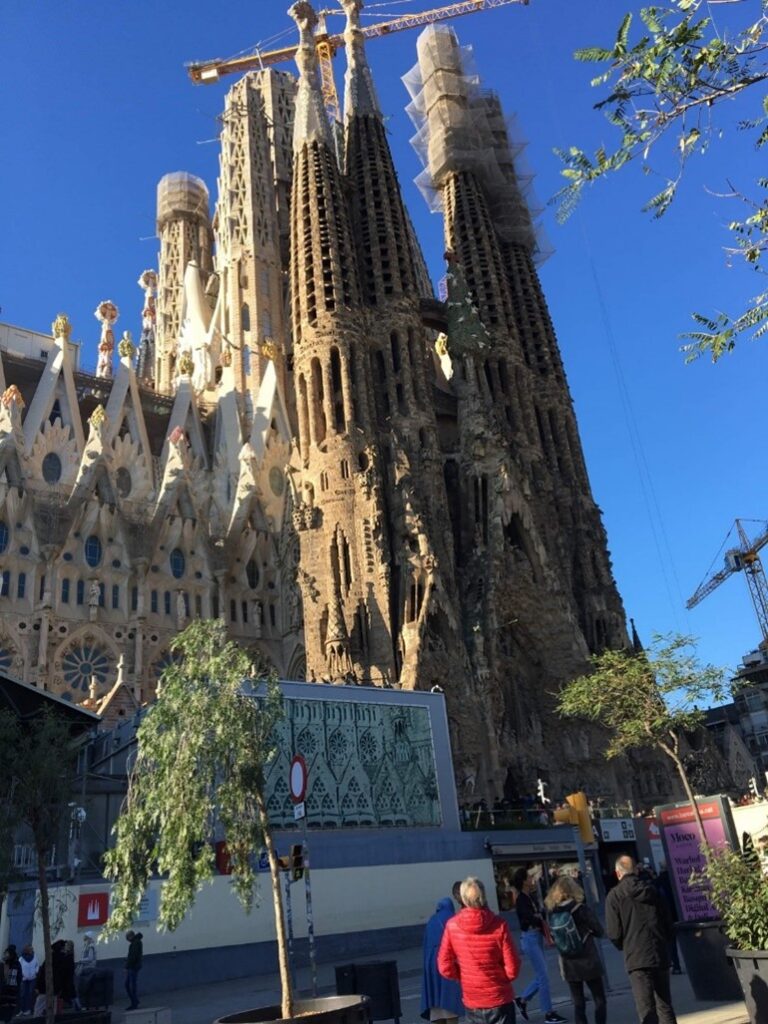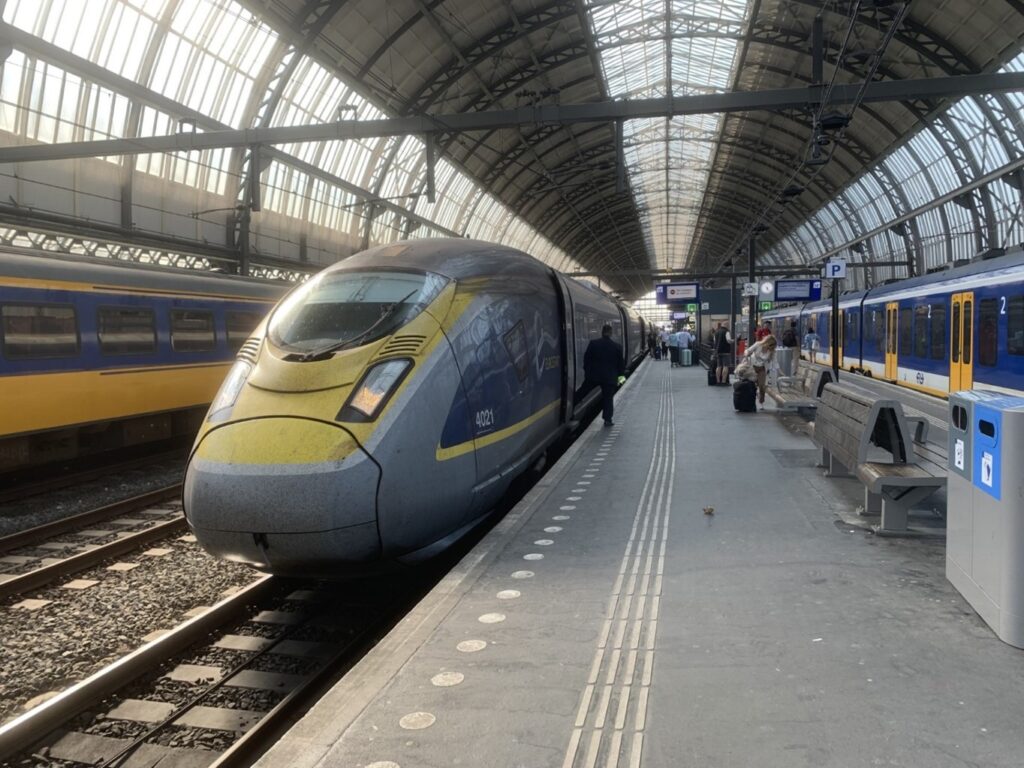The Channel Tunnel has just celebrated its 30th birthday. In those 30 years, it has been a great success connecting London to Western European cities such as Lille, Paris, Brussels, Rotterdam and Amsterdam.
With the prospects of potential new operators to challenge the incumbent operator, Eurostar looking to expand their fleet and destinations, and the ever-present issue of tackling short haul flights where more sustainable, reasonable alternatives are available, the future for Anglo-European rail travel looks to be bright. The team at Enroute has come up with a wishlist for what we would like to see going forward.
For simplicity, in this post we refer to the service that travels through the Channel Tunnel from London to Lille, Paris, Brussels, Rotterdam and Amsterdam as ‘cross-Channel Eurostar’, and the continental only service from Paris to Brussels, Amsterdam and Cologne as ‘Legacy Thalys’. Competitive journey times with air are approximately 6 hours (1 hour to get to the airport, 2 hours to check in/board, 1.5 hours flying, 0.5 hours airport formalities at destination, and 1 hour to get from the Airport to the City Centre).
First of all, there are a number of current issues that could be resolved:
- Stratford, Ebbsfleet & Ashford
- All 3 of these stations are situated on the current High Speed One (HS1) line and have platforms capable of handling cross-Channel Eurostar services. However, Ashford & Ebbsfleet had their European services cut during the COVID-19 pandemic.
- In order to provide benefit to Kent, it would be ideal for some of these services to be reinstated. Campaign group Bring Back Euro Trains is calling for international calls to be reinstated at Ebbsfleet and Ashford.
- Stratford International, meanwhile, has never been served by an international service, but adding calls here would provide transformational connectivity to East London, the East of England and Crossrail.
- Fare integration
- During a journey on a typical day, a trip from a major UK railway station (e.g. Birmingham New Street, Manchester Piccadilly, Bristol Temple Meads) to a station within Europe, beyond the realms of the cross-Channel Eurostar network such as Lyon or Frankfurt, will usually require 3 separate tickets. This means it is difficult to amend your journey if one leg goes wrong, without paying a hefty fee.
- It can feel as though you are using an airline that happens to use trains. If you live in London, Paris, or Brussels, this is not an issue, but when you are using the Channel Tunnel as a leg in your wider journey, this is a detractor from taking the rail option. Therefore, better co-operation between European & British rail operators as well as Channel Tunnel operators are necessary going forward.
- Interrail reservation fees (and places) for passholders need to be more streamlined with those across Europe as they are some of the highest (and most restricted) on the continent at present.
- Capacity at London St Pancras International
- Capacity at St Pancras International is severely limited. Due to the political realities of Britain not being in the Schengen Area, passports are required to be checked here.
- Furthermore, bags must undergo a security check before traveling through the tunnel. In order to run more trains, the reality is that this area will be in desperate need of a refurbishment and expansion.
- This is only set to become worse once the new European Union entry/exit biometrics system is introduced.
- Connectivity to the rest of the UK
- HS1 and HS2 are all built/going to be built to the European loading gauge. This is significantly wider than the legacy UK railway network allows and effectively means that European trains can’t run on the legacy network.
- However, significant demand is present for inter-European short haul flights from other cities such as Birmingham, Manchester, Leeds and Bristol.
- It would therefore be ideal if a link from HS1 to HS2 (and links to future high-speed lines as and when they are constructed) was built to allow trains to through run to Europe.
There are four potential service ideas that we have identified, detailed below. Some of these routes would only require soft infrastructure such as Border Force and security equipment, but in order to be competitive with flying, some require infrastructure projects to be completed before services can commence.
Due to political realities, services leaving the UK, once in Lille would be able to carry passengers on journeys exclusively within the Schengen Area, but only UK bound passengers would be allowed on the trains heading to the UK. This would mean either permanently or temporarily cordoning off a platform in order to allow these trains to stop.
In order to maximise competitiveness, multiple trains per day would be useful on each route. In both directions, an ideal timetable would be:
- A train early enough in the morning to cater to business travellers with meetings
- A train early in the morning (approx. 7-9am) for leisure passengers
- A train at approximately 11:00-13:00 & early/mid afternoon to allow people to use it from the rest of the country to connect to other European destinations such as Munich, Stuttgart, Hamburg, Berlin, Strasbourg, Nice, Venice, Rome, Madrid, Valencia & others.
- An evening train for business travellers to return home.
Technically, the current cross-Channel Eurostar e320 Siemens Velaro sets are able to operate on all electrical systems for the routes proposed, although procurement of additional sets would be needed in order to run these routes.
- 25 kV: HS1 & French, Spanish, Italian, Belgian & Dutch high-speed lines, Northern France legacy network
- 15kV: All lines in Germany (including high speed lines)
- 3kV: Italian & Belgian legacy network
- 1.5kV: Dutch & South of France legacy network
It would need to be identified if the sets could operate on the Italian and German signalling systems (Germany, notably, operates very similar Class 407 trains – these were originally designed with cross-Channel operation in mind!)
Cologne & Frankfurt

This extension feels the most logical of all of the ones proposed. DB put the idea forward a number of years ago, even running a trial ICE through to St Pancras. Their proposals were shelved in 2018, though there are recent reports they are looking at the route again.
The route proposed would likely serve the following stations:
- Lille Europe
- Bruxelles Midi / Brussel Zuid
- Köln (Cologne) – TBC
- Frankfurt (Main) Hbf
This route allows multiple benefits. Firstly, it eliminates the need for UK passengers to rely on the notoriously unreliable Brussels – Frankfurt ICE, but also gives a one-seat ride to Cologne. Not only is Cologne a great tourist destination in its own right, popular in the summer and winter, but it also provides a gateway to Germany with direct connections to Hamburg and Berlin.
Furthermore, the extension to Frankfurt allows easy access to other cities in southern Germany, as well as being an important financial/ business destination. Both of these cities also have good night train connections to travel easily deeper into Europe.
The main problem with this proposal is Cologne Hbf station, and how a platform could likely not be spared for this service. Therefore, alternatives would need to be considered, all would likely require new platforms. These could include potential solutions Enroute propose such as a platform at Messe Deutz or a new station on the Südbrüke bypass line.
Wherever it is, a deal should be made with the local transport authority to allow seamless connections to the Hauptbahnhof on either the S Bahn or Stadtbahn to connect easily to the Hauptbahnhof station to allow easy transfers onto night trains, services towards Hamburg/ Berlin and Rhine-Rhur Express trains to the other major cities in the Rhine-Rhur region.
Lyon & Marseille

Another potential route option would be London to Marseille. This route is very tourist-centric so would likely only be viable in the tourist high season of the summer. This route was operated by cross-Channel Eurostars until the COVID-19 pandemic, but did require a security check at Lille, which was impractical. Therefore, it would be ideal if this could happen before boarding.
This route would make all journeys to the south of France more competitive as they would be quicker and easier to navigate than the existing arrangement using Gare Du Nord and then having to get the RER to Gare Du Lyon.
This route would likely serve the following stations:
- Lille Europe
- Marne-la-Vallée–Chessy (Disneyland Paris)
- Lyon Part-Dieu
- Marseille St Charles
Disneyland Paris would be called at to not only revive the historic cross-Channel Eurostar service to it that was well used by families, but also to serve extra Paris demand if necessary as it is only a short RER trip from the centre. Furthermore, it is advantageous over Paris Charles De Gaulle Airport as it already has the infrastructure for cross-Channel Eurostar customs and security facilities from when it was served.
Lyon would be useful to serve due to its size and significance within France, as well as being a popular destination for city breaks. Marseille would be served as it is the gateway to the Côte D’Azur and a tourist city in its own right that pulls significant demand from the UK.
Barcelona

Barcelona is the gateway to Catalonia and Spain, and one of the most popular cities to visit for British travellers. In order to be competitive, this route would require the completion of the LGV line from Montpellier to Perpignan.
This route would likely serve the following stations:
- Montpellier Sud de France
- Barcelona Sants
To maximise competitiveness (compared with air travel) this service would need to run express to Montpellier. Sufficient demand to Lille, Disneyland Paris and Lyon would likely be met through other routes.
Montpellier would be served in order to access the Mediterranean coast, and Barcelona would then be served due to its popularity as a tourist destination, as well as its strategic position allowing access to the rest of Spain including Madrid, Malaga, Seville and Valencia easily.
Although journey time wouldn’t be directly comparable to flying, demand beyond Barcelona might be significant for people who prefer using the train that would normally fly to Spain for their summer holidays.
Milan

Milan is the gateway to Italy and has tourist significance. In order to be competitive, this route would require the completion of the high-speed line from Lyon to Turin. This journey is not a simple task from the UK currently.
This route would likely serve the following stations:
- Torino (Turin) Porta Susa
- Milano (Milan) Centrale
To maximise competitiveness (compared with air travel) this service would need to run express to Turin. Sufficient demand to Lille, Disneyland Paris and Lyon would likely be met through other routes.
Turin is a large Italian city with a number of direct flights to London. It is also marketed as a city break destination, with significant demand from the UK. Furthermore, Milan would see service both for the city itself and the fact that it is a gateway for Le Frecce and Italo high speed services to cities including Venice, Rome and Naples as well as a hub for sleeper trains to both Italy and central Europe.
Other ideas
It is possible for Eurostar (or another Channel Tunnel operator) to join an airline alliance and take advantage of the fact that its trains have the potential to pass directly through 3 of the 5 busiest hub airports in Europe (Amsterdam Schiphol, KLM; Paris Charles De Gaulle, Air France; and Frankfurt, Lufthansa).
Channel Tunnel operators should improve relations with these airlines and offer through tickets to London to avoid the need for short haul connecting flights.
Here are some other potential direct services from London, though many of them would likely have lower demand or long journey times and therefore be less competitive against flying. Some of these journeys could be made via good connections with the services we’ve suggested above:
- London – Lille – Strasbourg – Stuttgart – Munich
- London – Lille – Disneyland Paris – Geneva/Zurich
- London – Brussels – Cologne – Berlin/Hamburg
- London – Lille – Bordeaux
Other ideas
Overall, the Channel Tunnel and cross-Channel Eurostar have been very successful. However, there is great potential for it to grow and become even more successful in the future. This post has summarised some potential ideas that could be worth a try if they are deemed to be feasible.
These ideas would transform the way in which we travel, by both opening up a wide range of destinations within easy access of the UK in Europe, as well as provide competition to low-cost airlines such as Easyjet and Ryanair, and provide a cost effective and sustainable alternative to traveling within Western Europe.
Although limitations around physical constraints (such as platform/track capacity) as well as political constraints (passport/border checks, needing to isolate platforms and security checks) are acknowledged, if there was enough will in both Westminster and Brussels, then these proposals should be within a realm of possibility.
The next step for these proposals would be to encourage incumbent and prospective cross-Channel rail operators to consider the feasibility of these routes, to hopefully allow for a cohesive network of international trains to and from the UK.
A network map of all proposed ideas is shown below:




